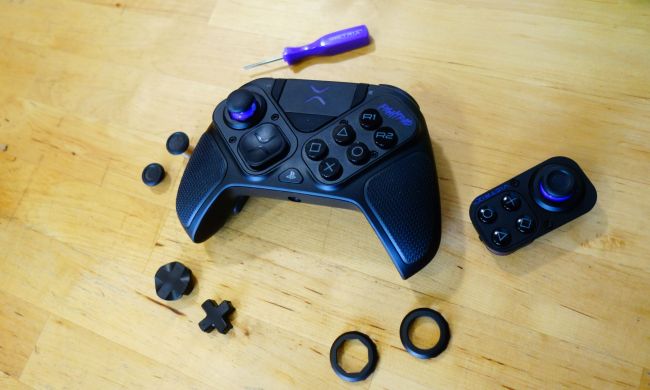

There are many people who want to play console games but can’t due to problems using traditional controllers. The Xbox Adaptive Controller helps to address this issue by offering customization options to cater to a wide range of requirements, which is key to enabling accessibility. Now, small German brand Plyon has used similar principles to create a prototype of a fully customizable gaming controller, which earned a nomination for the UX Design Awards. At IFA 2019, Digital Trends spoke with Plyon’s head of design, Alexander Römmelt, about how gaming controllers can be redesigned to allow more people to play and to benefit everyone.
Plyon created the Plyy as a demonstration of its sensor platform, which has flexible sensors that can be molded to any shape. Römmelt said he was hoping that the prototype will demonstrate what other sorts of controllers are possible beyond the standard shapes, and reduce the stigma associated with accessible interface devices. The Plyy is great for people with mobility issues, or those who have only limited use of their hands or fingers. But it’s useful for able-bodied gamers too, as it allows anyone to customize their controller to meet their particular needs.
The inspiration for the Plyy came from the world of robotics, from work with the German Aerospace Center. The original aim of the sensor technology was to give robots a sense of touch, but the founders realized the same technology could be used for humans as well.

The system consists of a mat and two handheld paddles, along with analog sticks and a range of small and large sticky buttons. To configure the Plyy, you simply take a button and stick it anywhere on the mat or on either paddle. The sensor technology inside the devices can detect touch and pressure, so they can be automatically configured to any button layout. The mat has a wireless charging strip on one side, so to recharge the controllers you simply place them on top of the strip. The controllers themselves are fully wireless, while the mat which is wired to the console.
The infinite customization options mean that almost anybody can find a layout that suits them. People who have issues with fine motor control can use the larger buttons, while people with arthritis can arrange the buttons on the mat so they needn’t bend their fingers around a curved controller. People with limited use of their hands or fingers can arrange all the buttons into a one-handed layout. And being able to change up the button layouts would be useful for gamers in long sessions seeking to avoid repetitive strain injuries or wrists issues.
The Plyy is only a prototype for now, but Römmelt says he hopes the concept will inspire the mainstream controller manufacturers to consider new concepts and to open their technology to a broader range of people.



